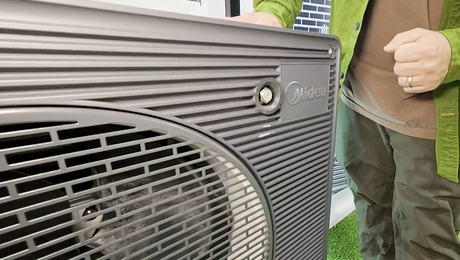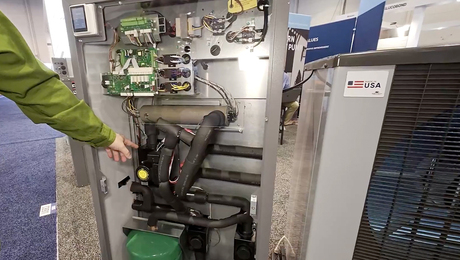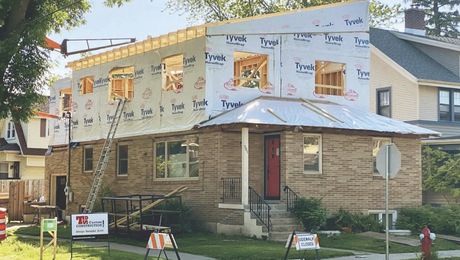How to Apply Fireblocking Foam
Learn how to use fireblocking foam effectively to create safer homes.
Sponsored by Loctite®
Fireblocking helps contain the spread of fire between floors of a house, so it’s a crucial step when it comes to building a safe home that’s up to code. Glenn Mathewson, educator with BuildingCodeCollege.com and all-around code expert, joins Tyler Grace at the Loctite® 2nd Chance House to go over every step of the fireblocking process in detail.
Here’s the Transcript:
Air-sealing is really all about improving the overall comfort, health, and performance of a home. But when it comes to fireblocking, it’s more about reducing drafts, meeting code, and maintaining safety. So today we have code expert Glenn Mathewson at the 2nd Chance House, and he’s going to walk us through his fireblocking process using the Loctite® Fireblock Foam.
Let’s Hear From Glenn
For the goal of an airtight, energy-efficient home, this is a great location for air-sealing, but being a fireblock location, it’s a wise choice to pick the orange can. So as you can see on this fireblocking, there’s some small gaps around it.
You can use the foam to go ahead and fill up these gaps that are going to allow for additional air leakage. Loctite® uses an orange color to help identify it as a foam that has been specifically tested for this application but also will provide the air-sealing for energy code.
Using the Fireblocking Foam
Here we’ve got pipes coming through the subfloor. While this isn’t an exact fireblocking application, it still creates a passage from the story below to the story above. So it’s a good location to go ahead and use a fireblocking foam. For this product, you need a minimum 1/4-in. and a maximum 1-in. gap.
It’s important to get down inside that space. The foam needs to fill in the hole and wrap completely around the penetration. You also want to be sure that you don’t shave or cut that foam because you need that finished, glossy skin on the surface. That’s part of how it was tested, and that’s part of how it’s going to work.
Considerations for Penetrations
In this room, the plumbing was installed before the fireblocking could be repaired at the bottom of the wall. So I’ve asked the carpenters to take some 2x lumber pieces and then notch them and piece them around these plumbing penetrations. Then will be the right time to follow up with the Fireblock Foam.
You want to get the foam down inside the block, not just on top. Fill the space where you’ve removed the wood. A helpful feature about the Fireblock Foam is even after it’s fully cured, it remains flexible. So when your plumbing professionals come back, the pipe can handle some minor movements without damaging the effectiveness of the fireblocking.
RELATED STORIES
























View Comments
Dear Glenn and the Loctite Sales Team: You should DEFINITELY inform your customers and FHB readers that this 'fireblock' foam and similar single-component foam from DOW / Great Stuff are VERY flammable when cured and will ignite at just 240 degrees F. This is significantly lower than the ignition temp for paper or wood. So these foams will ignite FIRST and spread flames - despite 'Fireblock' on the label. These foams are also banned for fireblocking in commercial construction - and only allowed in residential use by an exception: your building inspector must approve it. More knowledgeable residential building inspectors will flag foam fireblocking - forcing you to spend costly and annoying time digging foam out of holes. During our last inspection in MA, the guy walked through our new garage addition, saw the real fireblock sealant we used, smiled and said, "You avoided a big problem!" We used 3M CP 25WB, which is quick and easy to apply, and available at Home Depot and Lowes. I do not know if Loctite makes a similar product, but I hope so.